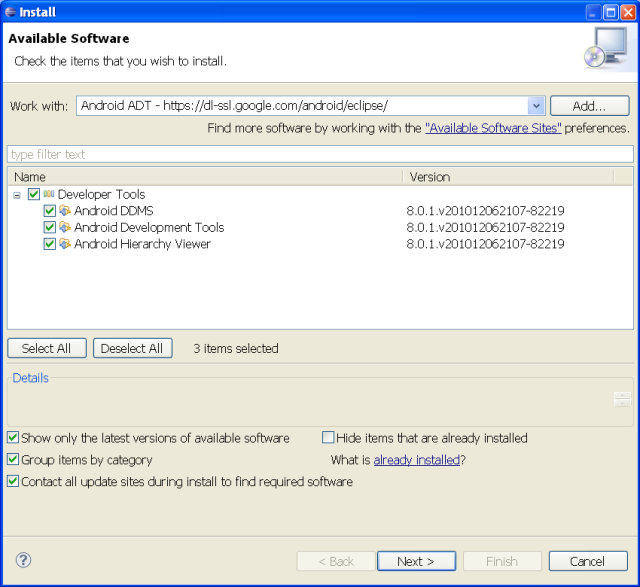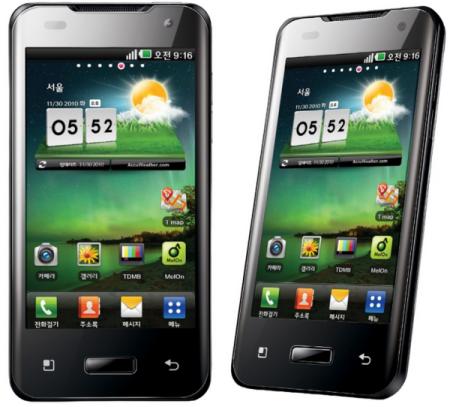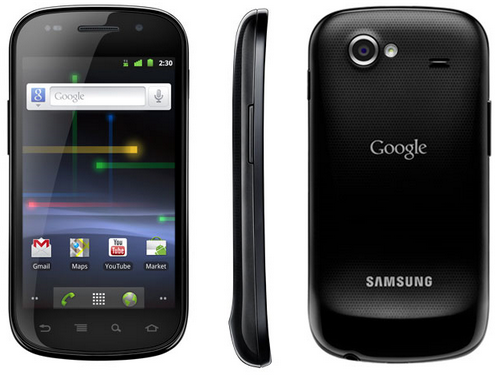Samsung will showcase two highly expected products at Mobile World Congress 2011, in Barcelona: The Galaxy S II smartphone with a 4.3″ Super AMOLED Plus display and dual-core processor and the new Galaxy Tab 10.1 (aka Galaxy Tab 2) with a 10.1″ display (1280×800) running Android 3.0 (Honeycomb). Samsung GALAXY S II Product Specifications are as follows: Network GSM 850/900/1800/1900 HSPA+ 21 850/900/1900/2100 OS Android 2.3 Gingerbread Display 4.27” WVGA (480×800) Super AMOLED Plus Processor ( BB& AP ) 1 GHz Dual Core Application Processor Camera Main(Rear): 8.0-Mega Pixel Camera AF with LED Flash Front: 2.0-Mega Pixel Camera Single Shot, Beauty Shot, , Panorama Shot, Smile Shot, Action Shot, Cartoon Shot Video Codec : MPEG4/ H.264/ H.263/ DivX VC-1 Playback : FULL HD(1080p)@30fps Recording : FULL HD(1080p)@30fps Audio MP3, AAC, AAC+, eACC+ 3.5mm Ear Jack & Speaker, Stereo FM Radio with RDS, Voice Recorder Hub Social Hub – Integrated Contacts, […]
Rockchip RK29xx Processors at CES 2011
Rockchip (瑞芯微电子), a Fuzhou (China) based company, showcased its new RK29XX processors at CES 2011. The processors are aimed at smartphones, mid, tablet and internet tv (smart tv) and compete directly with the like of Qualcomm snapdragon or Samsung Hummingbird. Here are the specs for the RK29XX series: 1.2 GHz ARM Cortex A8 core with Neon and 512KB L2 cache High performance 2D and 3D processors supporting OpenGL ES 2.0 and Open VG. The GPU can deliver up to 60 MT/s. 1080p video decoding for H.264, VP8, RV, WMV, AVS, H.263, MPE-4…. 1080p H.264 video encoding Supports DDRIII, DDRII, Mobile DDR memory 24-bit HW ECC for MLC Nand, support e-MMC boot 3 USB ports for device, host, 3G module 2 SD ports for SD card and WiFi Sensor interface for front and rear camera, up to 5M Standard TFT/EPD controller for variable panels 8 channel I2S and SPDIF TS port […]
Installing Android SDK on Windows XP – Hello World Application
You’ll find the full details for installing Android SDK at http://developer.android.com/sdk/installing.html. The purpose of this blog entry is to summarize what I had to do to install Android development environment (Android 2.3 SDK (Gingerbread)) on Windows XP. Before installing the Android SDK per se, you’ll need to install some set of tools used by the SDK. Here are the steps to setup your Windows XP computer for Android development: 1. Install Java Developer Kit (JDK) You need to go to http://www.oracle.com/technetwork/java/javase/downloads/index.html, select your OS (e.g. Linux, Windows, MAC…) and the file you want to download. I selected Java Platform (JDK), then downloaded Java SE Development Kit 6u23. I got the jdk-6u23-windows-i586.exe which I installed in the default directory, i.e. C:\Program Files\Java\jdk1.6.0_23). 2. Install Eclipse Classic Then you’ll need to install Eclipse, and open source IDE. Several versions are available at http://www.eclipse.org/downloads/, but since Google recommends Eclipse Classic, I just download […]
Near Field Communication (NFC) Introduction and Software Development
Android 2.3 features near field communication (NFC) in order to allow payment through your phone as it is already implemented in Japan with FeliCa (Felicity Card), a contactless RFID smart card system from Sony, direct communication between NFC devices, RFID reader, etc… NFC is already supported in Samsung / Google Nexus S. In this blog post, we’ll see what near field communication is, which hardware is needed and what needs to be done at the software level (driver and NFC stack). What is Near Field Communication ? Extract from Wikipedia: Near Field Communication or NFC, is a short-range high frequency wireless communication technology which enables the exchange of data between devices over about a 10 centimeter (around 4 inches) distance. The technology is a simple extension of the ISO/IEC 14443 proximity-card standard (proximity card, RFID) that combines the interface of a smartcard and a reader into a single device. An NFC […]
LG Optimus 2X Teaser Video – LG SU660 – LG P990
As you probably know LG announced their Optimus 2X smartphone based on Nvidia Tegra 2 earlier this week. I’ve just come across a Korean website showing LG teaser video/advertisement. Watch it below. Jean-Luc Aufranc (CNXSoft)Jean-Luc started CNX Software in 2010 as a part-time endeavor, before quitting his job as a software engineering manager, and starting to write daily news, and reviews full time later in 2011. www.cnx-software.com
LG Optimus 2X – First Dual Core NVidia Tegra 2 Smartphone
LG has just introduced the Optimus 2X (codenamed the LG Star), the first smartphone to run a dual-core processor namely Nvidia Tegra 2 @ 1GHz. The device will be initially available in Korea (Model: LG-SU660) in January 2011, and later in the year in Europe, then the rest of Asia (Model: LG-P990). LG Optimus 2X will be shipped with Android 2.2 upgradeable to Android 2.3 (Gingerbread). The phone features a 4-inch WVGA screen, 8GB of internal memory, microSD support (up to 32GB), HDMI output, Digital Multimedia Broadcasting (DMB), DLNA support, an accelerometer, a gyro sensor, 1080p MPEG-4/H.264 playback and recording and finally 2 cameras: an 8 megapixel back camera plus a 1.3 megapixel front camera for video calls. Please see the video below where the Optimus 2X is compared to the iPhone 4 and the Samsung Galaxy S. The LG Star is really the clear winner in terms of performance. […]
Google Nexus S and Android 2.3 (GingerBread) Unveiled
After much speculation, Google and Samsung finally lifted the lid on the Nexus S, the successor of Nexus One. It will be available for sale (unlocked) in the US on the 16th of December (Best Buy – 529 USD) and the UK on the 20th of December (Carphone Warehouse – 549.95 GBP) Samsung/Google Nexus S runs Android 2.3 (gingerbread) on a processor based on cortex A8 (Hummingbird) clocked at 1 GHz, with 512 MB RAM, 16 GB internal storage. The full specs are available on Google Nexus S page. One interesting new feature is Near Field Communications (NFC) that will allow the device to read RFIDs (e.g. for Interactive Advertising) and behave like a contact less card. So the phone might be used to make payments in the future and replace your credit/debit card. It could also be used as a contactless stored value smart card similar to the Octopus […]







